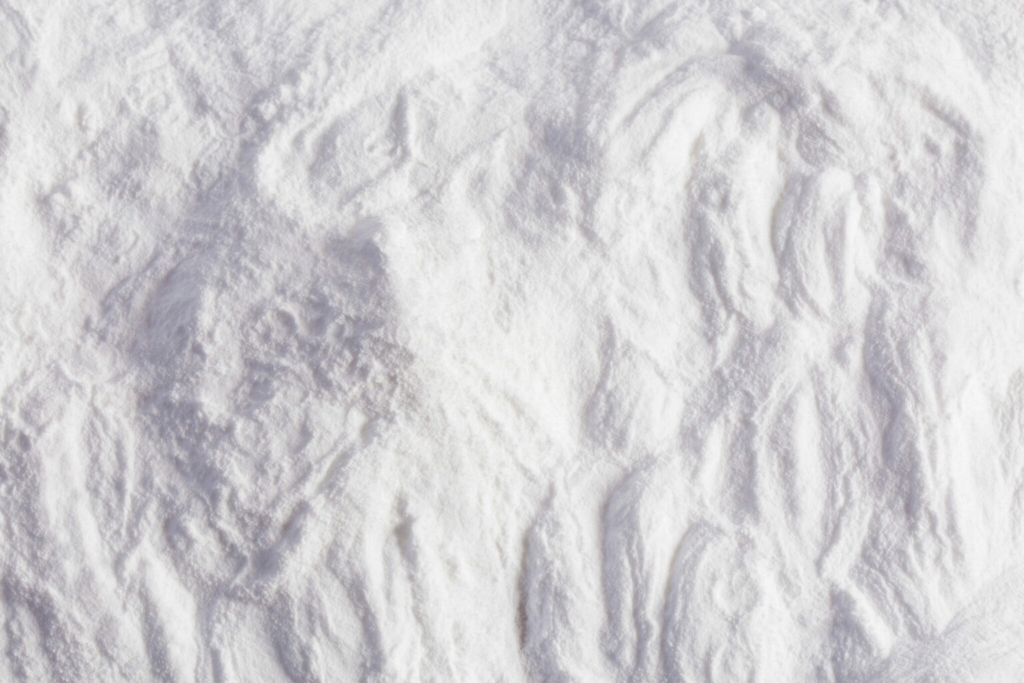Introduction
Ascorbyl glucoside is one of the most stable forms of vitamin C. It is a very effective antioxidant that improves collagen synthesis and can help reduce wrinkles. After penetrating the skin, ascorbyl glucoside is metabolized into vitamin C.
Ascorbyl glucoside in cosmetics
As a powerful antioxidant, vitamin C is able to combat the signs of skin aging and ensure a radiant complexion. It inhibits UV-induced skin damage, has a positive effect on wound healing, and inhibits the activity of MMP enzymes, which are normally responsible for collagen breakdown.
Unfortunately, vitamin C is very unstable in its pure form in water, which makes it problematic for cosmetic applications. It can also irritate the skin, especially in higher concentrations. Overcoming these obstacles has long been a real challenge for the cosmetics industry. However, a solution has now been found: the production of more stable and gentler derivatives of vitamin C. These act as precursors and are converted into vitamin C in the skin. This is why ascorbyl glucoside is often used in cosmetic formulations. This derivative of vitamin C is water-soluble and therefore much more stable. It is also characterized by very good tolerability and a pleasantly light texture.
These properties make ascorbyl glucoside one of the best and most effective derivatives of vitamin C. It also has a convincing brightening effect. With appropriate products, age spots can be reduced and pigment spots, such as freckles, minimized.
But what exactly is ascorbyl glucoside?
Ascorbyl glucoside is composed of ascorbic acid and a glucose molecule. Both components are linked by an ether bond. Ascorbyl glucoside is hydrophilic. In vivo studies have shown that hydrolysis into ascorbic acid and glucose is possible.
Ascorbyl glucoside demonstrates excellent stability even in aqueous solution and at relatively high temperatures. This also applies to metal ions. The active ingredient is also relatively stable when exposed to UV light. However, an increase in pH can lead to increased instability. This also applies to all other derivatives of vitamin C. In summary, it can be said that ascorbyl glucoside is probably the best alternative to pure vitamin C. Its effect is particularly effective in combination with niacinamide (a derivative of vitamin B3). When both ingredients are combined, they can provide optimal help for skin problems such as fine lines and wrinkles, as well as loss of firmness and elasticity. The combination of ascorbyl glucoside and niacinamide is also recommended for enlarged pores and an uneven complexion.
Ascorbyl glucoside profile
INCI: Ascorbyl Glucoside
CAS number: 129499-78-1
Description: Derivative of vitamin C
Appearance: Cream-colored to white powder
Molecular formula: C12H18O11
Melting point: 158 to 163 °C
pH value: ~ 2.4
Typical concentration: 0.1 to 2.0 percent
Effect: skin lightening, antioxidant (reduces signs of aging), improves collagen synthesis.
Ascorbyl glucoside as a highly effective and stable ingredient for innovative cosmetics
Ascorbyl glucoside is one of the most stable derivatives of vitamin C, an excellent antioxidant and also has brightening properties. It can neutralize skin-damaging free radicals, promote collagen synthesis and reduce skin discoloration. As it is a well-tolerated form of vitamin C, ascorbyl glucoside is suitable for almost all skin types.
We use the active ingredient ascorbyl glucoside in our high-quality private label products, which meets the highest standards of effectiveness, skin compatibility, and innovation. We combine proven ingredients with modern biotechnological developments to create tailor-made formulations that meet the individual needs of your target group. Our focus is on quality, transparency, and the optimal synergy of all ingredients—for visible results and a compelling brand experience.
Tojo Cosmetics Private Label—your brand, our passion for effectiveness and quality.
Interested? Contact us now with no obligation.
Literature:
Treatment with Ascorbyl Glucoside-Arginine Complex Ameliorates Solar Lentigos.
Takada M, Numano K, Nakano M, Yamamoto A, Imokawa G. Int J Mol Sci. 2024 Dec 15;25(24):13453.

